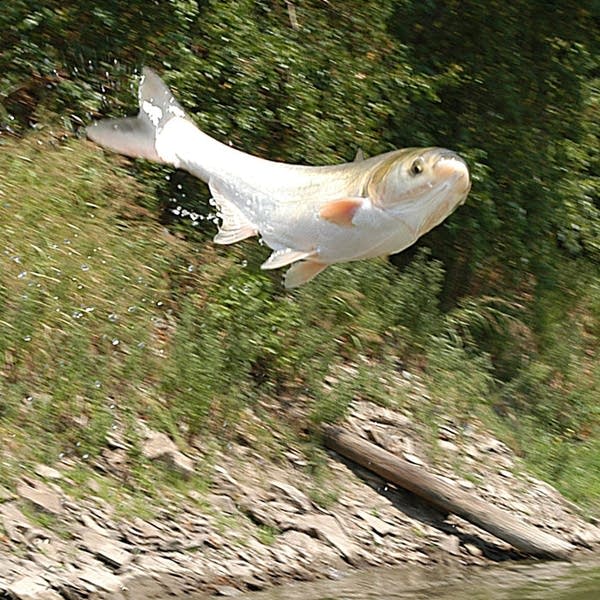Asian carp DNA found closer to Lake Michigan

DNA from the invasive Asian carp has been found closer to Lake Michigan than ever before, the U.S. Army Corps of Engineers said Tuesday, renewing fears that the fish have breached an electrical barrier meant to keep them from reaching the Great Lakes and destroying its multi-billion-dollar fishing industry.
The DNA - but no live fish - was found in three different spots along the Chicago River near the Wilmette pumping station north of Chicago, said Major Gen. John Peabody with the Corps' Great Lakes and Ohio River division. The sample was taken in October, and the Corps received the results Thursday.
That discovery has renewed environmentalists' calls for emergency measures to keep the voracious fish out of the Great Lakes, including immediately closing three shipping locks that separate Lake Michigan from the Mississippi River basin to prevent the giant fish from destroying the lakes' $7 billion fishing industry by out-competing native fish for food.
The news comes two months after officials said they found carp DNA in a shipping channel several miles from Chicago.
Create a More Connected Minnesota
MPR News is your trusted resource for the news you need. With your support, MPR News brings accessible, courageous journalism and authentic conversation to everyone - free of paywalls and barriers. Your gift makes a difference.
The pumping station, however, is on the shoreline of Lake Michigan, making the need for action urgent if there is hope of halting the carp's advance, said Joel Brammeier, president of the Alliance for the Great Lakes.
"We've got to start making management decisions that should have been made a couple of months ago," Brammeier said. "We're definitely playing catch-up. We've been waiting and waiting while these positive samples continue to turn up."
Peabody said the Corps was looking at all its options given the new information.
The biggest Asian carp can reach 4 feet in length and weigh 100 pounds while consuming up to 40 percent of their body weight daily in plankton, the base of the Great Lakes food chain.
Michigan, Minnesota and other Great Lakes states have asked the U.S. Supreme Court to order the locks closed immediately. The U.S. Supreme Court is expected to decide whether to accept the case on Friday.
In a response to the lawsuit, Illinois Attorney General Lisa Madigan countered that the states don't have the legal authority to demand the closing of canal locks within Illinois.
Madigan on Thursday was among officials attending an Asian carp briefing sponsored by U.S. Sen. Dick Durbin and U.S. Rep. Judy Biggert, both of Illinois, at Chicago's Shedd Aquarium.
Officials at the briefing said while they don't want the Asian carp to enter Lake Michigan, they worry shutting the locks could cause flooding in the Chicago area and hurt commercial shipping.
"At a time when we're working to put our economy back on track, we should not be doing anything that is really going to compromise our efforts at putting people back to work," U.S. Rep. Debbie Halvorson said.
The Obama administration also opposes closing the locks. Solicitor General Elena Kagan told the Supreme Court environmental DNA, or "eDNA," testing was experimental science. Discovery of genetic material from carp doesn't necessarily mean the fish were there, she said.
David Lodge, the University of Notre Dame ecologist who developed the Asian carp testing method, has said his team considered other ways the DNA might have ended up north of the barrier but believe the most likely explanation is that carp are or have been there.
The Alliance called previously for permanently severing the link between the Great Lakes and Mississippi River.
The presence of additional carp DNA above the electric barrier, Brammeier said, "is a reminder that relying on a single technological solution to this problem isn't sustainable."
The electronic barrier on the Chicago Sanitary and Ship Canal, about 20 miles downstream of Lake Michigan, was designed to prevent the carp from entering the Great Lakes by giving them a nonlethal shock that would deter their progress upstream.
John Sellek, spokesman for the Michigan Attorney General's office, said Illinois officials "massively underestimated" the outrage in the other Great Lakes states and are focusing on the interests of their state and the Chicago area.
"They're basically holding all the other Great Lakes states in their hands because they don't want to close those locks," Sellek said. "Their interests are very narrow to the point where the entire rest of the Great Lakes basin is at risk."
(Copyright 2010 by The Associated Press. All Rights Reserved.)
